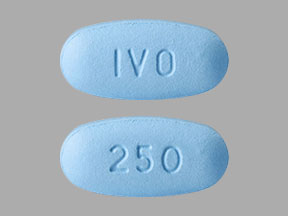Tibsovo and Alcohol/Food Interactions
There are 2 alcohol/food/lifestyle interactions with Tibsovo (ivosidenib).
Nicotine Ivosidenib
Moderate Drug Interaction
MONITOR: Coadministration with ivosidenib may decrease plasma concentrations of drugs that are substrates of CYP450 2B6, 2C8, and/or 2C9. Based on in vitro studies, ivosidenib may increase clearance via induction of CYP450 2B6, 2C8, and 2C9, resulting in increased plasma concentrations of agents that are metabolized by these enzymes. Clinical and pharmacokinetic data are currently lacking.
MANAGEMENT: Caution is advised if ivosidenib is used concomitantly with substrates of CYP450 2B6, 2C8, and/or 2C9, particularly sensitive substrates or those with a narrow therapeutic range. If coadministration is required, clinical and laboratory monitoring may be appropriate whenever ivosidenib is added to or withdrawn from therapy. The prescribing information for concomitant medications should be consulted to assess the benefits versus risks of coadministration and for any dosage adjustments that may be required.
References (2)
- (2018) "Product Information. Tibsovo (ivosidenib)." Agios Pharmaceuticals, Inc.
- (2023) "Product Information. Tibsovo (ivosidenib)." Servier Laboratories (Aust) Pty Ltd, Version: 1
Ivosidenib Food/Lifestyle
Major Food Interaction
GENERALLY AVOID: Grapefruit juice may increase the plasma concentrations of ivosidenib. The proposed mechanism is inhibition of CYP450 3A4-mediated first-pass metabolism in the gut wall by certain compounds present in grapefruit. Inhibition of hepatic CYP450 3A4 may also contribute. Pharmacokinetic data are available for the potent CYP450 3A4 inhibitor, itraconazole, and the moderate inhibitor, fluconazole. When a single 250 mg dose of ivosidenib was administered with itraconazole 200 mg once daily for 18 days, ivosidenib systemic exposure (AUC) increased to 269% of control, with no change in peak plasma concentration (Cmax). Based on physiologically-based pharmacokinetic modeling, coadministration of a 500 mg dose of ivosidenib with fluconazole (dosed to steady-state) is predicted to increase ivosidenib single-dose AUC to 173% of control, while multiple-dosing of both is predicted to increase ivosidenib steady-state Cmax and AUC to 152% and 190% of control, respectively. In general, the effect of grapefruit juice is concentration-, dose- and preparation-dependent, and can vary widely among brands. Certain preparations of grapefruit juice (e.g., high dose, double strength) have sometimes demonstrated potent inhibition of CYP450 3A4, while other preparations (e.g., low dose, single strength) have typically demonstrated moderate inhibition. Increased exposure to ivosidenib may increase the risk of QT interval prolongation, which has been associated with ventricular arrhythmias including torsade de pointes and sudden death.
GENERALLY AVOID: Coadministration with a high-fat meal may increase the plasma concentrations of ivosidenib. According to the product labeling, administration of a single dose with a high-fat meal (approximately 900 to 1000 calories; 500 to 600 calories in fat, 250 calories in carbohydrate, 150 calories in protein) increased ivosidenib Cmax and AUC by 98% and 25%, respectively, in healthy study subjects.
MANAGEMENT: Ivosidenib may be administered with or without food, but should not be administered with a high-fat meal. Patients should avoid consumption of grapefruit and grapefruit juice during treatment with ivosidenib.
References (1)
- (2018) "Product Information. Tibsovo (ivosidenib)." Agios Pharmaceuticals, Inc.
Switch to consumer interaction data
Tibsovo drug interactions
There are 584 drug interactions with Tibsovo (ivosidenib).
Tibsovo disease interactions
There are 2 disease interactions with Tibsovo (ivosidenib) which include:
More about Tibsovo (ivosidenib)
- Tibsovo consumer information
- Check interactions
- Compare alternatives
- Pricing & coupons
- Drug images
- Side effects
- Dosage information
- During pregnancy
- FDA approval history
- Drug class: miscellaneous antineoplastics
- Breastfeeding
- En español
Related treatment guides
Drug Interaction Classification
| Highly clinically significant. Avoid combinations; the risk of the interaction outweighs the benefit. | |
| Moderately clinically significant. Usually avoid combinations; use it only under special circumstances. | |
| Minimally clinically significant. Minimize risk; assess risk and consider an alternative drug, take steps to circumvent the interaction risk and/or institute a monitoring plan. | |
| No interaction information available. |
See also:
Further information
Always consult your healthcare provider to ensure the information displayed on this page applies to your personal circumstances.


